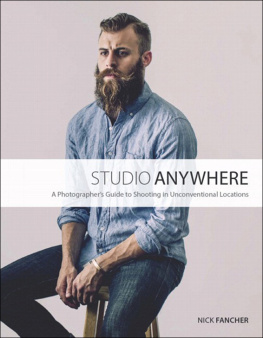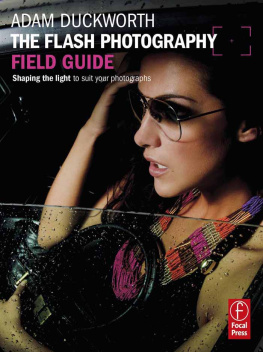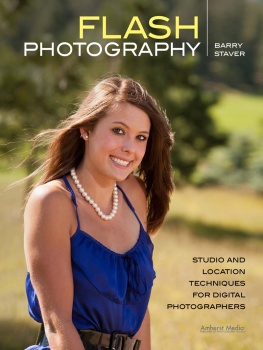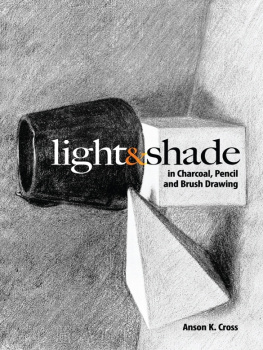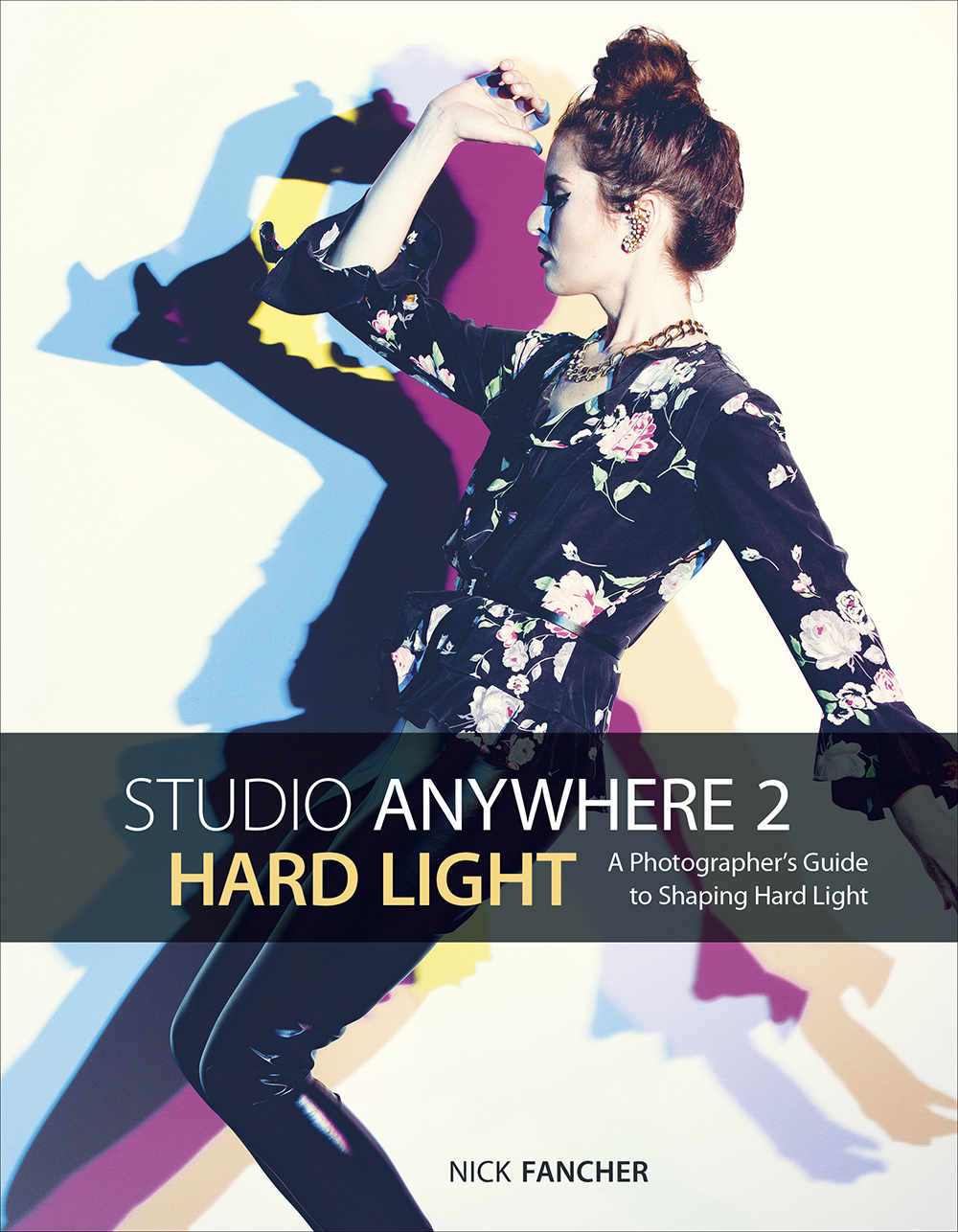STUDIO ANYWHERE 2
HARD LIGHT
A Photographers Guide to Shaping Hard Light
NICK FANCHER
STUDIO ANYWHERE 2: HARD LIGHT
A Photographers Guide to Shaping Hard Light
Nick Fancher
nickfancher.com
Project editor: Ted Waitt
Project manager: Lisa Brazieal
Marketing manager: Jessica Tiernan
Editor: Linda Laflamme
Layout and type, original edition: Holly Beal Malone
Layout and type, updated edition: Kim Scott, Bumpy Design
Cover design: Kim Scott, Bumpy Design
Proofreader: Aaron Taylor
ISBN: 978-1-68198-226-7
1st Edition (1st printing, January 2017)
2017 Nick Fancher
All images Nick Fancher unless otherwise noted
Rocky Nook Inc.
1010 B Street, Suite 350
San Rafael, CA 94901
USA
www.rockynook.com
Distributed in the U.S. by Ingram Publisher Services
Distributed in the UK and Europe by Publishers Group UK
Library of Congress Control Number: 2016950965
All rights reserved. No part of the material protected by this copyright notice may be reproduced or utilized in any form, electronic or mechanical, including photocopying, recording, or by any information storage and retrieval system, without written permission of the publisher.
Many of the designations in this book used by manufacturers and sellers to distinguish their products are claimed as trademarks of their respective companies. Where those designations appear in this book, and Rocky Nook was aware of a trademark claim, the designations have been printed in caps or initial caps. All product names and services identified throughout this book are used in editorial fashion only and for the benefit of such companies with no intention of infringement of the trademark. They are not intended to convey endorsement or other affiliation with this book.
While reasonable care has been exercised in the preparation of this book, the publisher and author assume no responsibility for errors or omissions, or for damages resulting from the use of the information contained herein or from the use of the discs or programs that may accompany it.
This book is printed on acid-free paper.
Printed in China
This book is dedicated to those who wont let obstacles stand in the way of their dreams. Keep pushing and fighting, ignoring the haters. Dont look back, and never stop learning.
ACKNOWLEDGEMENTS
Id like to begin by acknowledging Valerie Witte and the folks at Peachpit Press who green-lit this project from the beginning. Sadly, due to layoffs at Pearson, of which whom Peachpit is a subsidiary, the project was nixed. Id like to thank Ted Waitt at Rocky Nook for seamlessly transitioning the project from draft to print.
I couldnt have done it without the support of my wife Beth. I also need to call out Linda Laflamme, my editor, Holly Beal Malone, my designer, and Aaron Taylor, my proofreader, for helping me on this book, as well as Kim Scott at Bumpy Design and Lisa Brazieal, the Project Manager at Rocky Nook. You added a wonderful polish to this project.
Finally, thank you to all the readers of Studio Anywhere . Your enthusiasm around the book has exceeded my expectations. Continue to tag your images #studioanywhere so I can see what youre up to. It really makes all of this worthwhile.
Nick
CONTENTS

INTRODUCTION
WHY HARD LIGHT?
First off, let me preface by stating what this book is not . This book is not strictly hard light scenarios. Though it is mainly focused on scenarios using hard light, this book does include a few scenarios that involve mixing in a soft light source or softening an otherwise hard light source, so dont email to inform me of this oversight. Secondly, this book isnt a manual. As a matter of fact, I rarely even read manuals. Even Ikea instruction manuals, which are chock full of helpful illustrations, barely get a glance from me. Id rather dive right in and figure it out as I go. What this book is, however, is a compilation of techniques, hacks, and tips that Ive figured out or picked up over the years that build upon the techniques discussed in my previous book.
The main reason I rarely read manuals is that I am extremely impatient. Whenever I am buying a new piece of gear, its because I have thought about it and worked up to it for a while, so by the time the package arrives in the mail, the last thing I want to do is sit and read about it. I tear open the packaging, load up the batteries, and start shooting. Many times this results in my failure; I miss some important feature or do things out of order and have to backtrack. This haphazard manner of working isnt for everyone, but it allows me to figure things out in my own way and to discover some wonderful, unconventional ways of doing things.
Nor is this book a glorified list of a bunch of gear you need to buy, which you may not be able to afford anyway, and its not meant to be an exhaustive guide to hard light, either.
Instead, I envision Studio Anywhere 2 to be what I would have wanted to be included in the packaging when I bought my first flashgun: part manual, part compilation of ideas and techniques that has taken years to develop and perfect. The techniques in this book are predominantly for hard-light scenariosi.e., scenarios lit with harsh, unmodified light. But this book is about more than that. Its also about how to manipulate, soften, and all-around shape light from an unmodified flashgun. Think about it: If all you needed to light any given scenario was one or two flashguns with few to no modifiers, you wouldnt need a team of assistants and thousands of dollars worth of lights and light modifiers to make the shot. Sound good? Keep reading.
HARD VERSUS SOFT
Preferences are subjective. Especially when it comes to the needs of a client. One client loves candid, on-the-fly shots while another prefers more polished, composed images. One Creative Director prefers natural light while their predecessor was only pleased with studio lighting. What Ive learned to do is not get too comfortable in one particular niche of the industry and not take it personal if a client changes their mind after seeing my images mid-shoot. Maybe at first they thought that they wanted hard light, but after the shoot begins, they start asking for me to minimize shadows, and by the end of the shoot, I may end up firing a softbox through a scrim (FYI, that means extra, extra, extra soft light).
One of my regular clients is Jenis Splendid Ice Creams, a high-end ice cream boutique that started in Columbus, Ohio, over 10 years ago but has expanded across the country. They brought me on to help elevate their brand through photography. They showed me images of what theyve been producingwhich was really solid, beautiful workbut expressed a desire to start pushing in a new direction. They really liked my vibrant colors and hard shadows and thought wed make a great team. They were right. But every shoot doesnt consist of me just winging it, lighting according to the mood Im in that day. Ive learned that sometimes they still do want beautiful, soft light. So for the sake of time, money, and ice cream, Ive learned to sometimes give them both soft and hard options for the same setup.
In is almost shadowless. This results in more of the blue backdrop occupying real estate in the final image. I actually prefer the hard light image. How about you?


